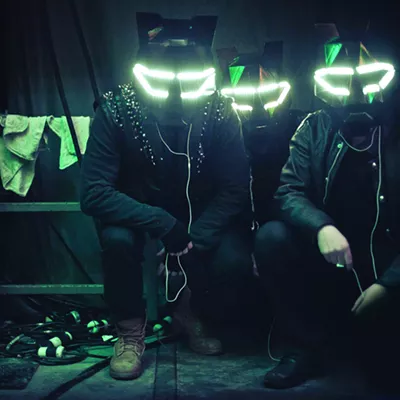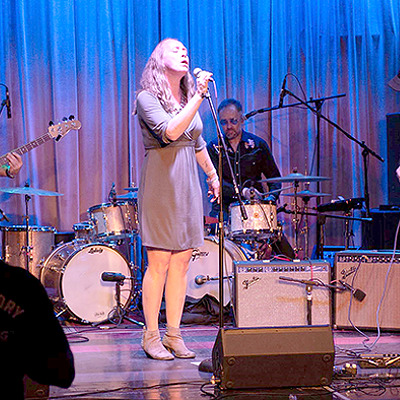Seventy years ago, in 1934, he created his first-ever ballet in the United States, "Serenade," an ethereally lovely group dance that's since become the signature piece of the New York City Ballet.
This weekend, as part of a wave of Balanchine centennial celebrations across the country, the student dancers of the UA Dance Ensemble will give their first performance of "Serenade," accompanied by the musicians of the Arizona Symphony Orchestra.
"It's a thrill to do it," says ballet professor Melissa Lowe. "Everyone is excited. Some of our dancers have dreamed of doing it. It's a real gift."
The concert, to be staged Thursday through Sunday in the new Stevie Eller Dance Theatre, is a double bill with the UA Opera Theatre. After the 35-minute ballet, the student singers and musicians will give a fully staged and costumed performance of the one-act opera Beauty and the Beast by Vittorio Giannini.
Nowadays, "Serenade" is a staple of ballet companies around the world--Suzanne Farrell Ballet, for instance, performed it at Centennial Hall in November. But it's unusual for a university company to get permission from the Balanchine Trust to dance it, Lowe says, noting that the trustees "are very particular." And the dance has a particular meaning for the UA. The architects of the Stevie Eller theater based the lobby design on the ballet's opening scene, skewing the supporting pillars at the exact angles the "Serenade" dancers take as the curtain rises. Thus, the arriving audience members can step into architecture that mimics the ballet's movements, and then proceed to the concert hall to see the same gestures enacted live on stage.
The title of the dance is lifted directly from its music, Serenade in C major for String Orchestra, by Tchaikovsky, Balanchine's compatriot and one of his favorite composers, though the choreographer reversed the music's third and fourth movements. He originally staged it for his students in the School of American Ballet, and its predominantly female parts--20 women to six men--reflect the distribution of genders in those early ballet classes.
Two memorable movements in the piece come directly from mishaps during rehearsals: One dancer arrives late and hurriedly steps into the corps, and another deliberately falls down. Like most of Balanchine's so-called neoclassic ballets, "Serenade" is stripped of any plot, but it has some of the romantic beauty of such early story ballets as Swan Lake and Giselle. The women wear long, pale-blue tutus that seem to float across the stage, Lowe says.
Leslie Peck, who danced "Serenade" with the New York City Ballet under Balanchine's direction, staged the work on the UA dancers. She also danced the piece later in her career at Pacific Northwest Ballet, along with Jory Hancock and Lowe. Hancock, head of the UA dance division, and Lowe rehearsed the piece with the UA students.
"Leslie has staged it for quite a few ballet companies," Lowe says. "The dance is so big that the companies are usually stretched. But Leslie was impressed with our depth. We were able to double-cast it."
Rebecca Blaney, Clifton Brown, Alissa Dale, Claire Hancock and Justin Quandt take leading roles on Thursday and Saturday, while Geoffrey Gonzalez, Shay Lucey, Antoinette Lum, Keri Poff and César Rubio step up on Friday and Sunday. Thomas Cockrell conducts the orchestra for both "Serenade" and Beauty and the Beast.
"It's challenging for the musicians and the dancers," Lowe reports. "But we just had our first combined rehearsal, and it looks accomplished and professional. It gave me chills."














